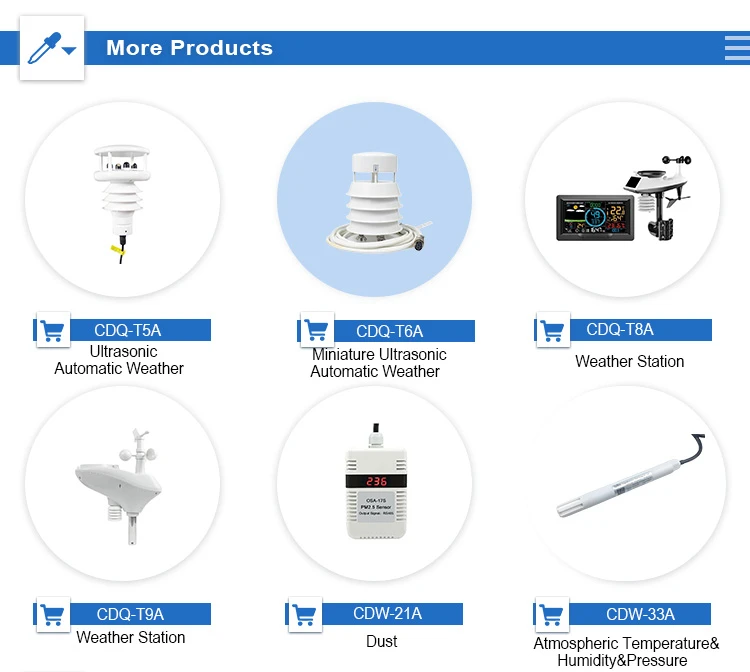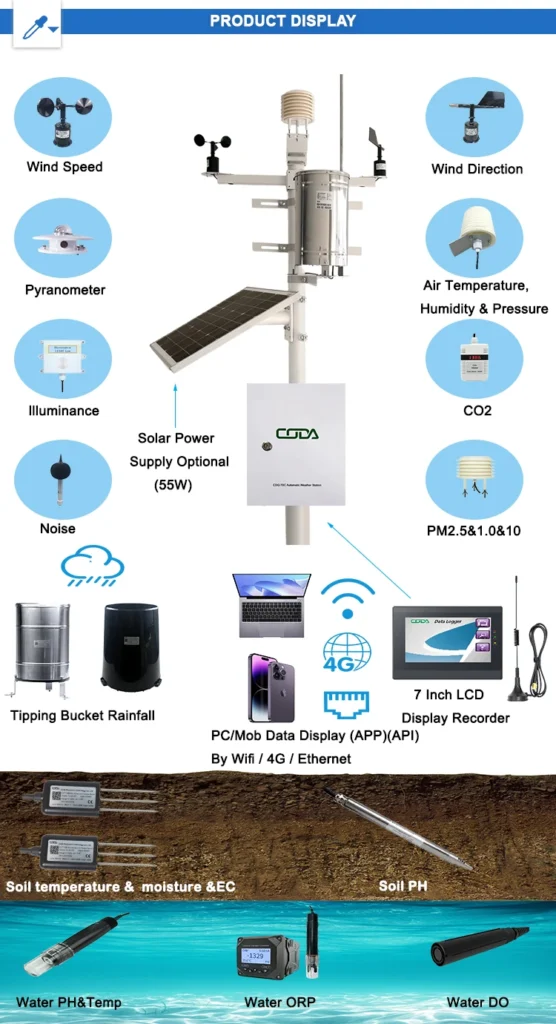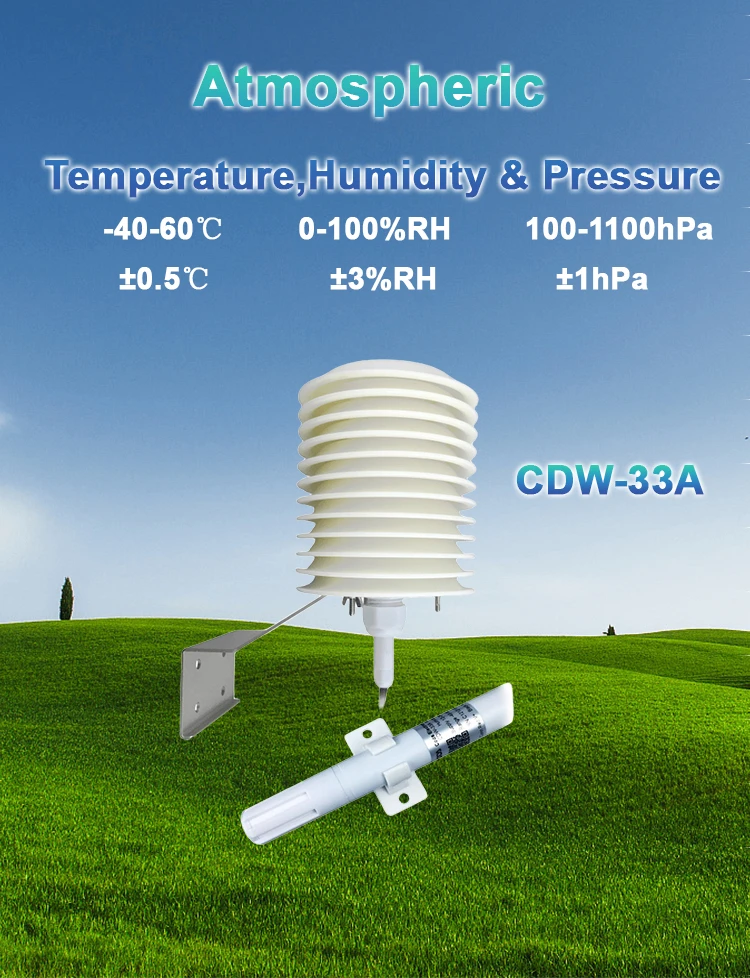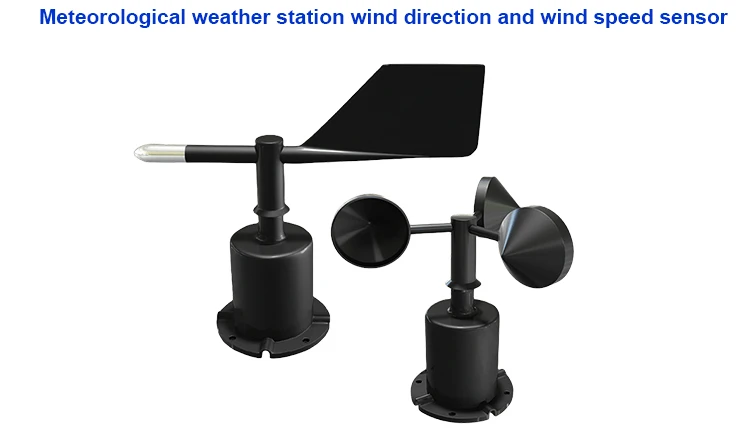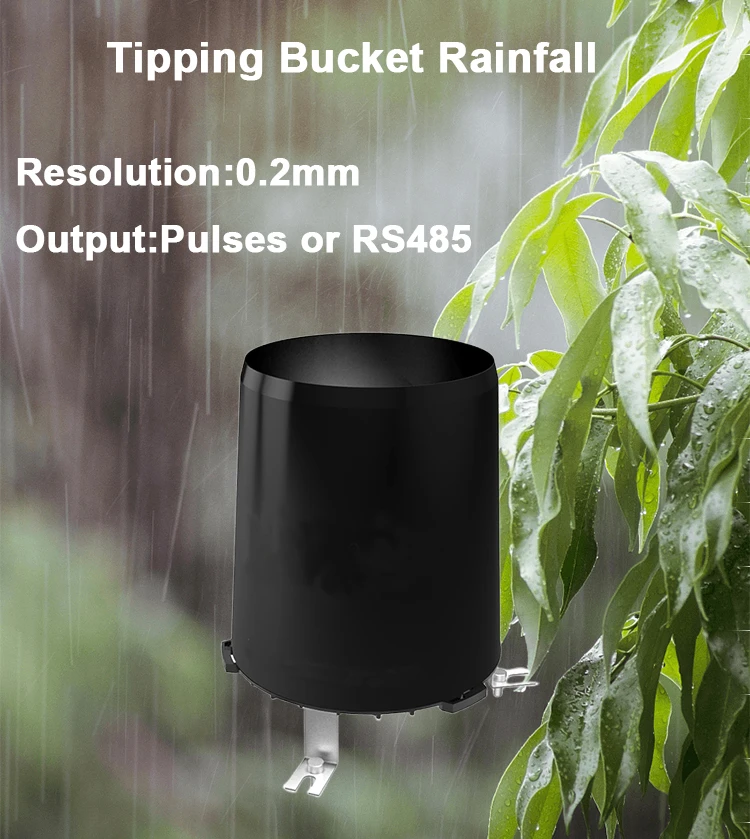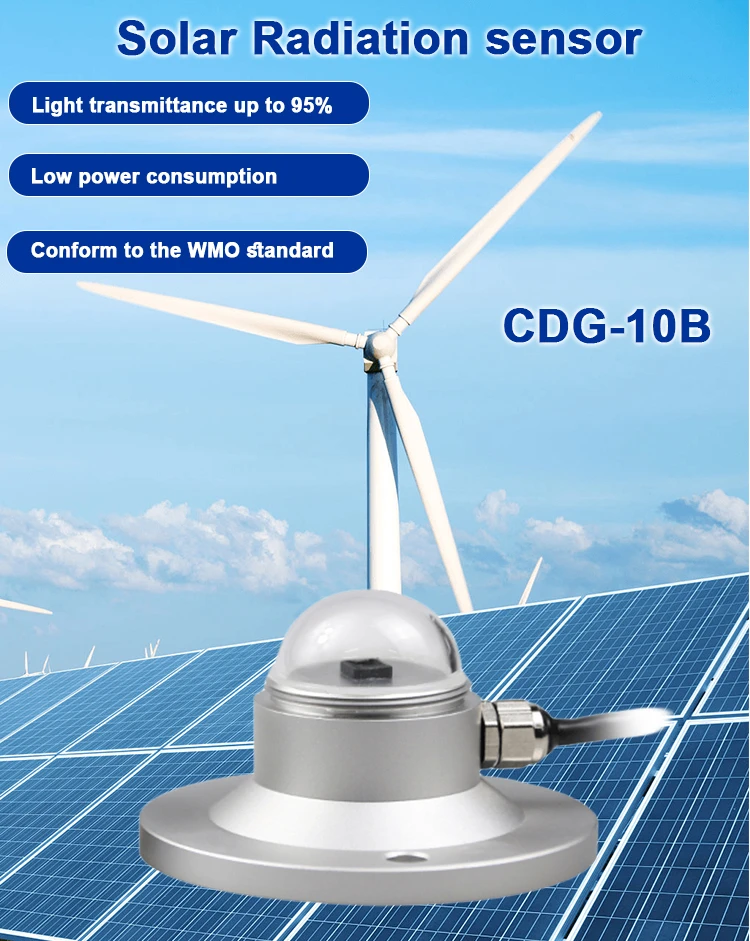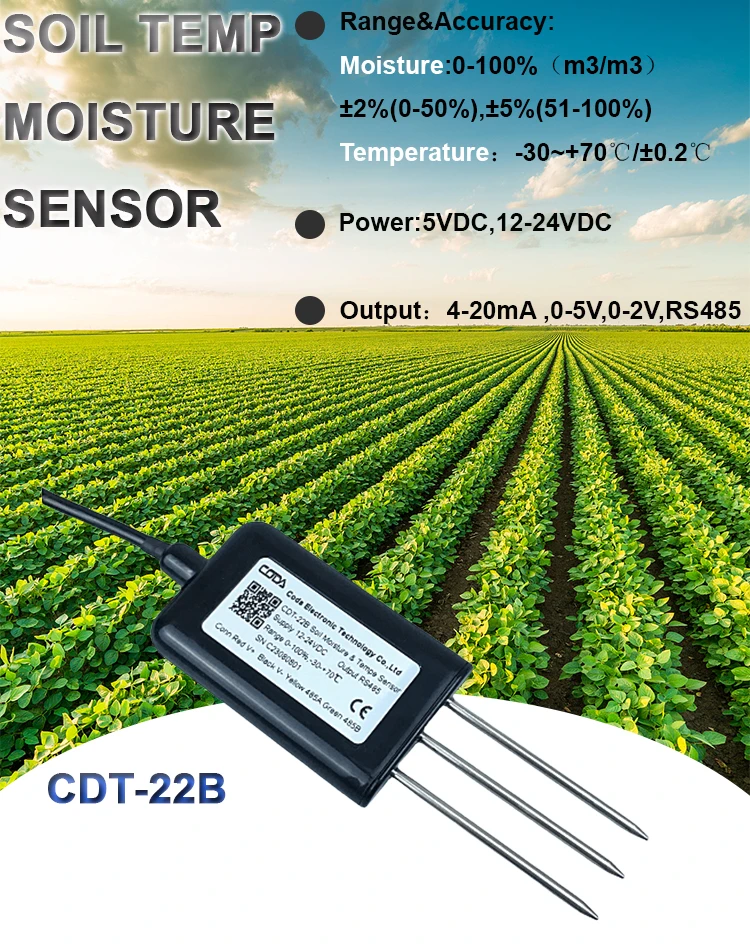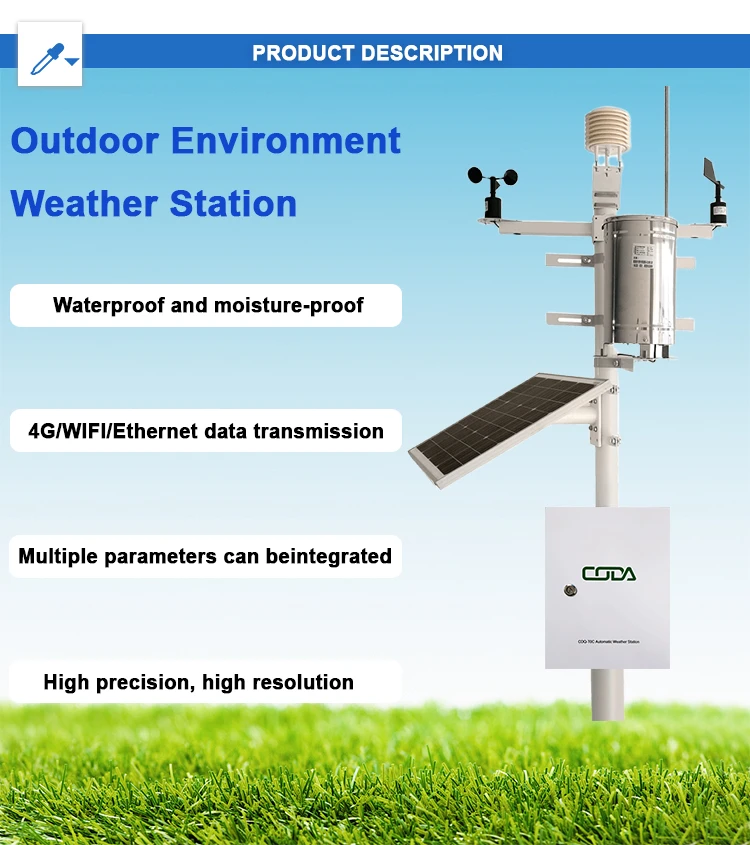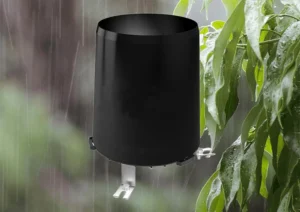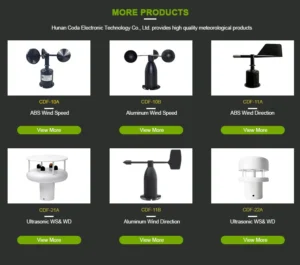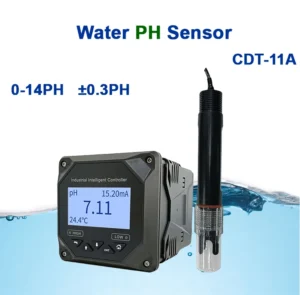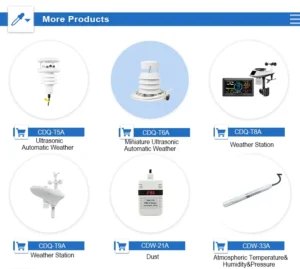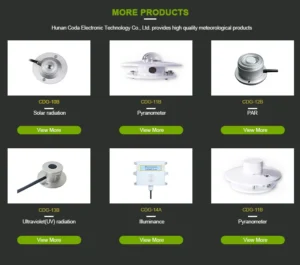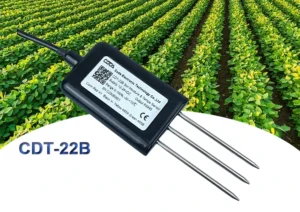Weather elements and their instruments
Weather elements and their instruments are key to understanding how the atmosphere works. These elements are the physical factors that shape weather conditions. They form the basis for research and forecasting. Here is a simple guide to the main weather parts and how we measure them:
**Weather Station Equipment and Sensors**
1. **Temperature**
– **Instruments**: Weather stations use different kinds of thermometers. These include standard, high/low, and electronic types. They also use temperature sensors, such as thermocouples and thermistors.
– **Overview**: Temperature shows how hot or cold the air is. It is usually measured in degrees Celsius (°C) or Fahrenheit (°F).
– **Key Features**: Electronic thermometers give fast results and are very accurate. They can be used in many places.
– **Purpose**: To keep track of temperature changes all the time.
– **Applications**: Found in weather stations, labs, greenhouses, and homes.
**Benefits**: It helps keep the environment safe and makes production more efficient by maintaining the best conditions.
– **Cost**: Ranges from affordable models for everyday use to professional devices that can cost thousands of dollars.
– **Installation**: Just secure the device and calibrate it. It’s easy!
2. **Humidity**
– **Devices**: Dry and wet bulb thermometers, electronic hygrometers, hair hygrometers, and humidity sensors.
– **Overview**: This measures the amount of water vapor in the air. It is often shown as relative humidity (%).
– **Key Features**: Electronic hygrometers are very sensitive. They show real-time data on their display.
– **Purpose**: Measures humidity levels, both relative and sometimes absolute.
– **Applications**: Used to keep the best conditions in climate-controlled rooms, museums, and homes.
– **Benefits**: Stops damage to items from too much or too little moisture in the air.
– **Cost**: Prices range from low-cost domestic models to more expensive professional-grade ones.
– **Installation**: It needs to be calibrated for the environment. Keep it out of direct sunlight.
3. **Barometric Pressure**
– **Devices**: Mercury barometers, pneumatic barometers, electronic barometers, and pressure sensors are all types of devices.
– **Overview**: This measures the air pressure on a unit area. It is usually given in hectopascals (hPa) or millibars (mb).
– **Key Features**: Modern electronic barometers need little maintenance and offer a wide range of measurements.
– **Purpose**: This helps us predict the weather and adjust altimeters.
– **Applications**: Weather tracking is important. It helps keep planes safe and supports activities at high altitudes, like mountain climbing.
– **Benefits**: It makes weather predictions more accurate and keeps operations safe.
– **Cost**: Prices can range from a few hundred dollars to complex models that cost tens of thousands.
– **Installation**: Regular calibration is important to keep accuracy high.
4. **Wind Speed and Direction**
– **Devices**: Anemometers measure wind speed. Wind direction indicators show which way the wind blows. Wind speed sensors track how fast the wind is moving.
Wind direction detectors help find the wind’s direction. Wind energy anemometers are used for wind energy projects.
– **Overview**: Wind refers to the horizontal movement of air. Wind speed shows how fast air moves over time. Wind speed is measured in meters per second or knots. Wind direction shows us where the wind comes from.
– **Key Features**: Ultrasonic anemometers stand out for durability due to their lack of moving parts.
– **Purpose**: Tracks wind speed and direction in real-time.
– **Applications**: Important for offshore installations, airports, and wind power sites.
– **Benefits**: It makes sure that operations are safe in different industries. It also helps use wind energy efficiently.
– **Cost**: Costs can range from a few thousand to hundreds of thousands of dollars, depending on performance.
– **Installation**: It is important to align the wind vane correctly. Also, make sure there are no obstructions nearby.
5. **Rainfall**
– **Instruments**: Rain gauges (e.g., tipping bucket sensors, siphon gauges, and standard rain gauges).
–**Overview**: This measures how much water falls to the ground in a certain time. It is usually recorded in millimeters (mm).
– **Key Features**: Automated rain gauges offer remote data transmission.
– **Purpose**: Provides precise rainfall measurements for analyzing.
– **Applications**: This is often used to check water levels and to plan irrigation in farming.
– **Benefits**: Aids in water resource management and offers early warnings for potential disasters like floods or droughts.
– **Cost**: Options range from low-cost manual gauges to high-tech automated systems that can cost many thousands of dollars.
– **Installation**: It needs a clear area that has no trees or leaves.
These tools are important for watching the weather in many places. They help make safety, planning, and environmental management better.
6. Radiation
– **Instrument:** Includes radiometers such as gross radiation meters, net radiation meters, solar radiation sensors, and direct radiation sensors.
**Description:** It measures how strong solar or ground radiation is.
– **Characteristics:** Features high sensitivity and quick response times.
– **Function:** It shows how strong solar radiation is and where it comes from.
– **Application Scenarios:** Good for weather research and solar power generation.
– **Value:** Helps improve the use of solar energy and supports research on climate change.
– **Price Range:** Costs range from a few thousand to tens of thousands of dollars due to advanced technology needs.
– **Installation and Commissioning:** Proper alignment is important to prevent shading.
7. Cloud Amount and Visibility
– **Instruments:** Cloud gauges such as laser cloud altimeters and radio sounders. You can also use visibility gauges. These include gauges for seeing transmission, scattering, and visibility sensors.
– **Description:** Cloud cover measures how much of the sky is covered by clouds. It is shown in octants. Visibility is the farthest distance a person can see a target clearly. This is measured in kilometers.
– **Characteristics:** Very automated and works in all weather.
– **Function:** Keeps track of changes in the cloud and how clear the atmosphere is.
– **Application Scenarios:** Commonly used in airports and weather stations.
– **Value:** Critical for flight safety and accurate weather forecasting.
– **Price Range:** Costs are higher because of the complexity of technology.
– **Installation and Commissioning:** Professional setup is required to prevent obstructions.
8. Soil Temperature and Humidity
– **Instruments:** Soil temperature sensors and soil moisture sensors.
– **Description:** This tool measures soil temperature and moisture levels. It helps with accurate monitoring.
– **Characteristics:** Sensors are put in the soil to watch it for a long time.
– **Function:** Delivers continuous data on soil conditions.
– **Application Scenarios:** Useful for farming and checking the environment.
– **Value:** Improves irrigation and fertilizing, which boosts farm productivity.
– **Price Range:** Costs range from tens to hundreds of dollars.
– **Installation and Commissioning:** Sensors should be properly buried to prevent interference.
9. Atmospheric Composition
– **Instrument:** Tools such as carbon dioxide monitors and ozone meters.
– **Description:** Checks the levels of specific gases in the air.
– **Characteristics:** Gives accurate measurements, perfect for scientific questions.
– **Function:** Offers real-time atmospheric composition insights.
– **Application Scenarios:** Useful for protecting the environment and studying weather.
– **Value:** Helps track air quality and studies how chemicals move in the air.
– **Price Range:** Prices can start from a few thousand dollars and go up to hundreds of thousands, based on features.
– **Installation and Commissioning:** Setting up needs calibration and maintenance by trained experts.
10. Other Meteorological Elements
**Sunshine**:
– **Instrument:** Insolation meters, such as Camp method insolation meters and Jolly insolation meters.
– **Description:** This measures how long sunlight hits the ground. It is usually measured in hours.
– **Characteristics:** Provides automatic recording features that are good for long observation periods.
– **Function:** Provides daily and total sunshine duration data.
– **Application Scenarios:** Useful for farming plans and weather studies.
– **Value:** It impacts how crops grow and how well we use energy.
– **Price Range:** Ranging from hundreds to thousands of dollars.
– **Installation and Commissioning:** Place in a shaded area and clean regularly for accurate results.
**Evaporation**:
– **Instrument:** Evaporation dishes.
**Description:** This measures how much water evaporates from a surface over time. The result is shown in millimeters (mm).
– **Characteristics:** A simple design that works well for field monitoring tasks.
– **Function:** Provides key evaporation rate data that many industries need.
– **Application Scenarios:** Often used in farming and water research projects.
– **Value:** It helps improve how we manage water resources.
– **Price Range:** Costs typically range from tens to hundreds of dollars.
– **Installation and Commissioning:** This needs keeping water levels steady and reducing pollution as much as possible.
**Agricultural Environmental Monitoring Instruments**
Environmental monitoring tools are important for farming. They help meet different needs, such as:
**Soil Monitoring**:
– *Soil Moisture Sensors:* Help track soil moisture levels. This supports better irrigation practices.
– *PH Sensors:* They measure how acidic or alkaline the soil is. This helps decide how to use fertilizer.
– *Soil Nutrient Analyzers:* Check the nutrient levels in the soil. Look for nitrogen, phosphorus, and potassium. This helps make better fertilizer plans for higher yields.
**Weather Monitoring**
– **Temperature Sensor:** Monitors temperature changes. It provides useful data to improve crop growth and pest control methods.
– **Humidity Sensor:** Measures how much moisture is in the air. This is important for knowing how plants lose water and for deciding how much to water them.
– **Wind Speed and Direction Sensor:** Provides important information on wind weather pattern. This is useful for planning crop fields and windbreaks.
– **Rain Gauge:** Measures how much it rains. This helps plan irrigation and avoid floods.
**Crop Monitoring**
– **Leaf Area Index Meter:** This tool measures the leaf area of crops. It helps us check plant health and growth.
– **Crop Growth Monitor:** Uses remote sensing to track crop growth and estimate possible yields.
**Pest and Disease Monitoring**
– **Pest and Disease Monitor:** It finds pest issues and harmful organisms. This helps with fast prevention and control methods.
**Water Quality Monitoring**
– **Water Quality Analyzer:** Tests the irrigation water to see if it is good for healthy crop growth.
**Impact of Weather elements on Daily Life**
Weather affects how people live each day. It also impacts their health, energy use, and comfort. Here are some specific effects:
– **Temperature:**
– **Clothing Choices:** Changes in temperature affect what people choose to wear.
– **Health Concerns:** Very high or low temperatures can cause heat-related illnesses or frostbite.
– **Energy Use:** Heating and cooling needs change with the temperature. This affects how much energy we use and the costs.
– **Humidity:**
– **Physical Comfort:** High humidity creates discomfort, while low levels may result in skin dryness.
– **Health Issues:** Both high and low humidity can lead to health problems.
– **Barometric Pressure:**
– **Health Effects:** Sudden changes in atmospheric pressure is measured can cause headaches and other discomfort in sensitive people.
– **Weather Prediction:** Changes in air pressure are key for predicting weather changes.
– **Wind Direction and Speed:**
– **Comfort While Traveling:** Wind strength affects how easily we can move outside.
– **Safety Concerns:** Strong winds can pose threats such as falling debris or increased risks in high-altitude work.
– **Rainfall:**
– **Transportation Disruptions:** Rain can make it hard to get around and travel becomes more difficult.
– **Agriculture Impacts:** Rainfall has a big effect on how well farms grow food and how wet the soil is. This affects crop yield.
– **Sunshine:**
– **Biological Rhythms:** Sunlight levels affect our body clocks and how well we sleep.
– **Energy Generation:** The amount of sunlight affects how much solar power is produced.
By checking the weather often and knowing how it affects them, people can change their routines. This helps them deal with changes in the environment. As a result, they can have a more balanced daily life and work more effectively.
